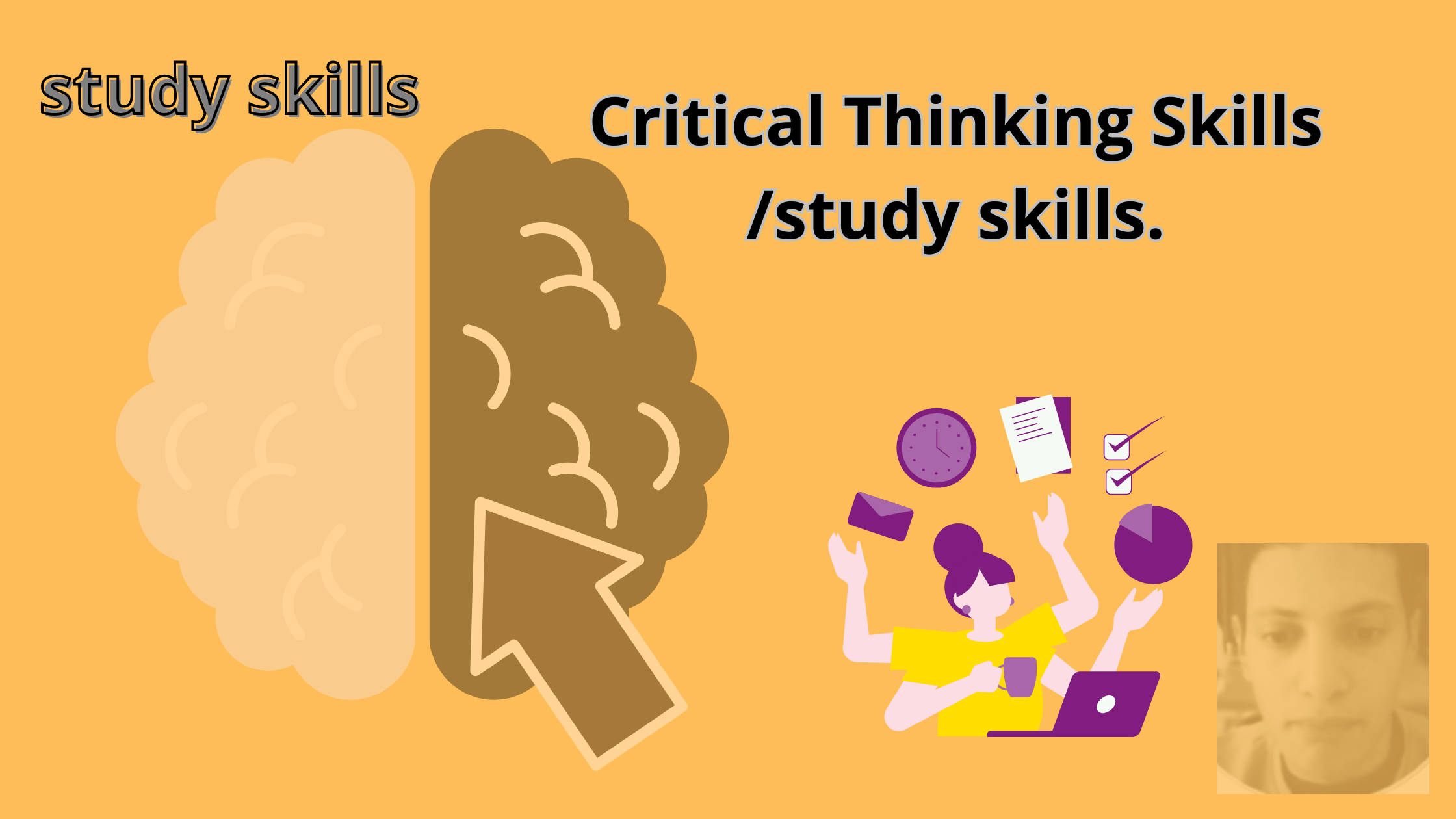Critical Thinking Skills
Objectives:
• Develop an awareness of the critical thinking process. • Build productive critical thinking questions.
• Distinguish between a fact and an opinion
“Higher-order thinking, critical thinking abilities, are increasingly crucial to success in every domain of personal and professional life”.
Pr. Richard Paul
Audio file
What people say and what you read cannot always be obvious, clearly stated, or revolve around
reasonable arguments. In order to get hold of what others say and write, you must ask questions, consider alternatives, and recognise different points of view; in other words, you must think things through.

1.Critical thinking is the opposite of taking for granted any information you come across, a
strategy that is usually referred to as ‘the sponge approach’. It is described as the ability to engage in reflective and rational thinking in order to identify and understand the logical connection between ideas/facts and, therefore, be able to draw your own structured, clear and well-reasoned conclusions. Since critical thinking is about determining the worth of the information, it is usually referred to as ‘the panning-for-god style of thinking’.
Critical thinking is a complex process that requires a set of high order thinking skills -see the Bloomfied taxonomy introduced in lesson 2- and attitudes built around a series of critical thinking questions. This process moves from descriptive thinking, to analytic thinking, to evaluative thinking
1.Description: asking questions in order to contextualize the problem or topic at hand and to put together concepts related to the background of the information. This step involves the following questions:
• Who: to ask about the identity of the participant(s). Who is involved?
• What: to ask about the situation/context/topic/thing in question. What is this about?
1
• When: to ask about the timing. When does this occur?
• Where: to ask about the place and environment. Where does it take place?
2. Analysis: asking questions in order to take the information to pieces in an attempt to
explore the relationship of parts to whole, identify reasons, draw comparisons and provide alternatives.
• Why: to identify the causes and weak and strength points.
• How: to identify the relationship between the parts and the process/manner in which something works. How does one factor affect another?
• What if: to identify alternatives, possible situations and responses. What if this were wrong? What are the alternatives? What if there were a problem?
3. Evaluation: asking questions to make judgements about the value and relevance of the
analysis: make sense of the facts, outline implications and solutions, draw conclusions and make recommendations.
• So what: to identify the impact and the consequences of the analysis in order to
solve the problem, improve something, …. So what am I saying about this? Is it successful? Convincing?
• What next: to identify what action should be taken. What can be learnt from it? What needs doing/ considering now?
2.An Opinion vs. a Fact
If someone asks you who won ‘Ballon d’Or’in 2019, the answer would be shared by all people,
that is ‘Lionel Messi’. If someone asks you about who is your favourite football player, the answer would be very personal, hence not be shared by all people. No two people would disagree on the first answer as it can be verified, but they may disagree on the second answer as it highly depends on their own preferences which are unique to them. The first answer is called a fact while the second one is called an opinion. So, what is a fact? What is an opinion? In what way a fact differs from an opinion?
A fact is an objective statement that can be verified and proven to be true -or false-. Most importantly, it does not reveal personal emotions or what the writer/speaker think about the topic in question.
2
An opinion is a subjective statement based on a personal belief or judgement about a given topic. It is open to debate as it differs from one person to another. Notice that opinions may be based on facts, but in this case, it remains a personal interpretation of the fact. As opinions reflect personal feelings, attitudes and beliefs, some writers/speakers, when reporting facts, use specific mechanism in an attempt to influence the thinking of their readers. It is therefore important for you to think critically and be able to distinguish between accurate, objective information and the one that is biased, to avoid being manipulated and therefore come to the right conclusion.
3. The Importance of Critical Thinking in Education
Being a student in 2021 is quite different from being one is 2011. In a span of 10 years, the
world of education has witnessed a sea change. As the world keeps facing new challenges, especially due to COVID-19, younger generations, and the education system they are a part of, has also become dynamic. However, there are certain foundations to any education system that has stood the test of time. One key element that has always been stressed upon and practiced by educators in the education spectrum is imparting Critical Thinking skills. Enhancing a student’s critical thinking skills is particularly essential in education, which believes in teaching students how to think and not what to think. Here are some of the reasons why students need critical thinking skills in today’s education
• Enhancing creativity and curiosity
• Promoting self-assertion and self-reflection • Boosting career prospects
• Nurturing problem-solvers and innovators • Fostering allied life skills:







